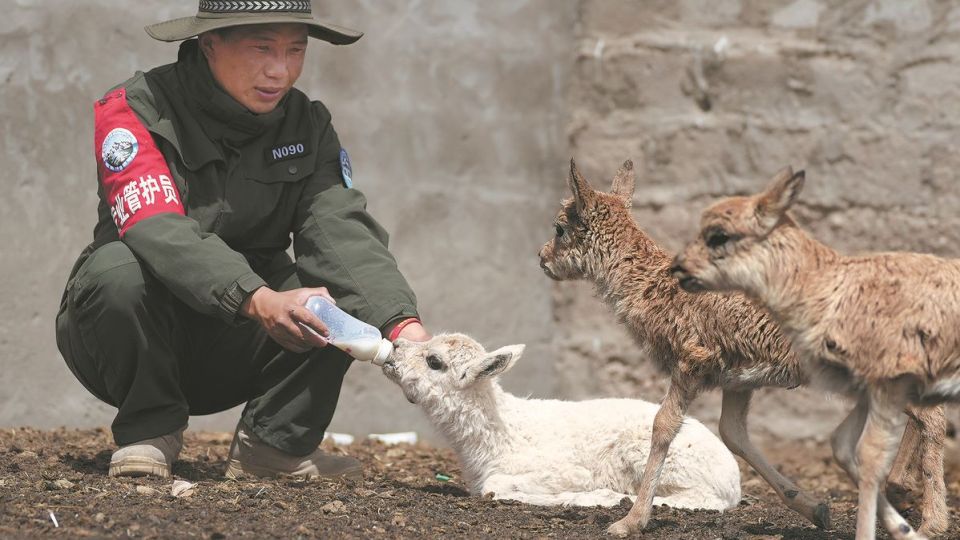July 19, 2024
LHASA – Wildlife rangers on patrol in the remote Changtang National Nature Reserve, in Southwest China’s Xizang autonomous region, recently stumbled upon the first white Tibetan antelope calf ever found in the reserve.
High in the Himalayas, at nearly 5,000 meters above sea level, Tibetan antelope, along with their newborn calves, face a gauntlet of predators such as wolves and bears during their annual migration to their summer habitat. Staff at the Tsolungma Management Station play a vital role, conducting daily patrols, monitoring movements and setting up warning signs to protect the animals.
During a recent patrol, rangers found the shivering white calf by a river. They swiftly rescued the tiny creature, wrapped it in warm clothes and took it back to the station for care.
“White animals are considered auspicious symbols in Tibetan culture,” said Lodre, chief of the station, who led the rescue. “Finding a white antelope calf is an incredibly rare sight.”
Station staff members are now bottle-feeding the white calf, along with several other calves separated from their mothers during the migration. The seven rangers have saved 20 young antelope this year.
“After a few months of care, these calves will be strong enough to return to the wild,” Lodre said.
According to the region’s 2023 Environmental Bulletin, Tibetan antelope numbers have boomed from a low of 70,000 last century to over 300,000 today. Similar gains have been seen in black-necked crane populations, which have grown from under 2,000 to over 10,000.
Officials credit strict ecological protection measures for the positive trend. Improved water quality and a focus on biodiversity conservation have led to a significant recovery in wildlife populations, with species never before seen in the region also being discovered.
“Camera traps have captured elusive Bengal tigers in the wild,” said Tsering Gyatso, deputy head of Xizang’s Regional Ecology and Environment Department. “We’ve even had sightings of the black stork, a rare bird known as the ‘giant panda of birds’.”
Xizang has 47 nature reserves, which cover over a third of its land area.


